![]()
![]()
![]()
Use LEFT and RIGHT arrow keys to navigate between flashcards;
Use UP and DOWN arrow keys to flip the card;
H to show hint;
A reads text to speech;
24 Cards in this Set
- Front
- Back
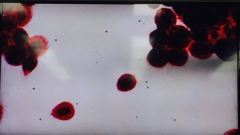
- phylum - genus - reproduction process - facts about shape/life |
Phylum: CHLOROPHYTA (green algae) Genus: Chlomydomonas RP: normally asexual (mitosis), sexual in unfavorable conditions; syngamy, isogamous facts: unicellular, has flagella |
|
|
syngamy
|
the pairing and fusion of morphogenically similar haploid gametes to form a diploid zygote
|
|
|
isogamous |
to have an identical shape and appearace
|
|
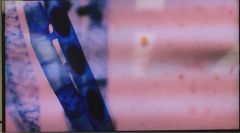
- phylum - genus - reproduction process - facts about shape/life |
Phylum: chlorophyta genus: spirogyra RP: sexually through conjucation as seen in pic) facts: filamentous |
|
|
conjugation
|
sexual reproduction process where filaments of opposite mating types lie side by side and form projections that grow toward each other, merge forming a conjugation tube, then pass cellular contents of one into the other to fuse
|
|
|
Characteristics of CHLOROPHYTA -predominent organizations -pigments -energy storage product -cell wall |
-PO: unicellular, filamentous, colonial
-pigments: chlorophyll a, b -ESP: starch -cell wall: cellulose |
|
|
Characteristics of PHAEOPHYTA -predominent organizations -pigments -energy storage product -cell wall -products its in |
PO: filamentous, multicellular
pigments: chlorophyll a, c; fucoxanthin ESP: laminarin, mannitol, lipids cell wall: cellulose, alginates products: kombu (Laminaria aka kelp), emulsifier in dripless paint, ice cream, pudding mixes, cosmetics as alginic acid |
|
|
Characteristics of RHODOPHYTA -predominent organizations -pigments -energy storage product -cell wall -products found in |
PO: multicellular pigments: chorophyll a; phycobilins ESP: modified starch cell wall: cellulose, agar, carrageenan products: jello (red), sushi |
|
|
Characteristics of BACILLARIOPHYTA -predominent organizations -pigments -energy storage product -cell wall |
PO: unicellular
pigments: chlorophyll a,c fucoxanthin ESP: chrysolaminarin, lipids cell wall: silica (glass) |
|
|
Characteristics of DINOZOA -predominent organizations -pigments -energy storage product -cell wall |
PO: unicellular pigments: chlorophyll a,c ESP: starch, lipids cell wall: pectin, cellulose plates |
|
|
Characteristics of EUGLENIDA -predominent organizations -pigments -energy storage product -cell wall |
PO: unicellular pigments: chlorophyll a,b ESP: paramylon, lipids cell wall: none |
|
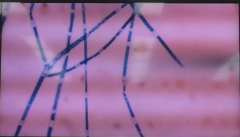
- phylum - genus - reproduction process - facts about shape/life |
Phylum: CHLORPHYTA Genus: Cladophora RP: sexually through conjugation facts: exists maturely as haploid and diploid; alternation of generations |
|
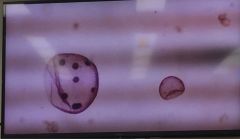
- phylum - genus - reproduction process - facts about shape/life |
Phylum: CHLOROPHYTA Genus: Volvox RP: oogamy facts: colonial; produce daughter colonies in asexual RP |
|
|
oogamy
|
motile sperm swim to and fuse with immotile egg to form diploid gamete
|
|
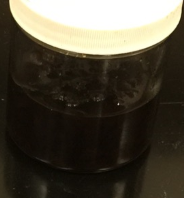
-phylum -genus -RP -facts about shape/life |
Phylum: PHAEOPHYTA Genus: Fucus RP: antherida (M) and oogonia (F) organs contained in conceptacles facts: unique in its phylum for having multicellular reproductive organs |
|
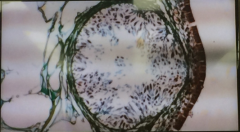
- phylum - genus - facts about shape/life |
Phylum: PHAEOPHYTA Genus: Fucus facts: multicellular male reproductive organ |
|
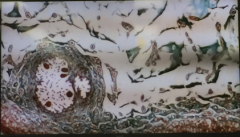
- phylum - genus - facts about shape/life |
Phylum: PHAEOPHYTAGenus: Fucusfacts: multicellular female reproductive organ
|
|

- phylum - genus - pigment - facts about shape/life |
Phylum: RHODOPHYTA Genus: Polysiphonia pigments: phycobilins facts: filamentous |
|
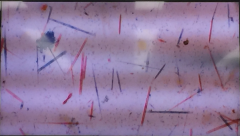
- phylum - genus - pigment - facts about shape/life |
Phylum: BACILLARIOPHYTA/DIATOM Genus: diatom....? pigments: chlorophyll a,c xanthophyll facts: unicellular, primary link in the aquatic food chain, diatomaceous earth: layer of diatoms shells |
|
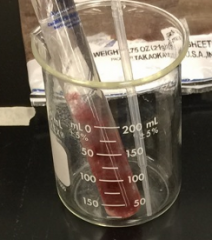
phylum and genus of this?
|
RHODOPHYTA, Polysiphonia,
|
|
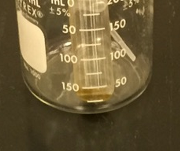
<----- what is the brown stuff? (phylum)
|
DIATOMS/BACILLARIOPHYTA
|
|

- phylum - genus - pigment - facts about shape/life |
Phylum: DINOZOA Genus: Peridinium Pigment: chlorphyll a,c facts: has flagella, unicellular |
|
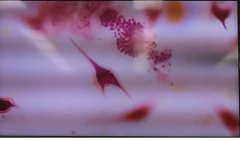
- phylum - genus - pigment - facts about shape/life |
Phylum: DINOZOA Genus: Ceratium Pigment: chlorphyll a,c facts: has flagella, unicellular |
|
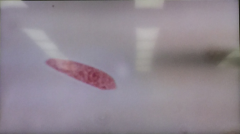
- phylum - genus - pigment - facts about shape/life |
Phylum: EUGLENIDA/EUGLENOIDS Pigments: chlorophyll a,b facts: unicellular; no cell wall; has 2 flagella |

